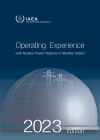Siting is the process of selecting a suitable location for a facility, including appropriate assessment and definition of the related design bases. The siting process for a nuclear installation generally consists of a site survey, site selection and site evaluation, and ends with the fundamental milestone of the site licensing award.
Siting of nuclear facilities
- Site survey is the process of identifying candidate sites for a nuclear installation after the investigation of a large region and the rejection of unsuitable sites.
- Site selection is the process of assessing the sites identified by the screening and comparing them on the basis of established safety and suitability criteria to select one or more preferred candidate sites.
- Site evaluation is the analysis of those factors at a site that could affect the safety of a facility or activity on that site.
The selection and evaluation of a site suitable for a nuclear installation are crucial processes: they can significantly affect construction time, costs, public acceptance and safety of the installation over the whole operating time.
Siting typically addresses all hazard types and interactions between the installation and the surrounding environment: natural events such as earthquakes, geotechnical phenomena, volcanism, flooding, meteorological events; human-induced events (both of accidental and malevolent origin); dispersion of radioactivity and feasibility of emergency plans. These are also called safety-related characteristics. Non-safety-related factors have also to be considered for sustainable and appropriate siting of nuclear installations, such as plant security, plant technology, economics, availability of cooling water, availability of transport and access to the electricity grid, non-radiological environmental impact and socioeconomic impact.
Investigating site characteristics to ensure safety
The safety of a nuclear installation in relation to the characteristics of the site is based on comprehensive investigation and refined hazard assessment. It is necessary to have information on site characteristics from the beginning of the screening of the sites to select the most appropriate one. Site investigation activities must start well before the final decision is to be taken.
Once the site has been selected, more in-depth investigation is required to support the site evaluation phase (see more on site investigation). This phase may confirm that the site is suitable and identifies the plant design basis. For every external hazard, parameters are chosen so they can be used in the nuclear installation’s design and its safety assessment.
IAEA training and review services to assist Member States
The IAEA assists its Member States in applying the Agency’s Safety Standards on siting through safety review services, advisory services, training and workshops. It offers the Site and External Events Design Review Service (SEED), during which a review team consisting of IAEA staff and external experts visits the location of a planned site and provides recommendations and suggestions in light of the Agency’s Safety Standards.
Together with Member States, the IAEA also holds national and regional workshops that aim at addressing issues or difficulties in Member States and identifying practical solutions in the area of siting, site evaluation, external events design and safety assessment. These SEED Capacity-Building workshops are recommended for Member States that are embarking on nuclear energy programmes for the first time.
The IAEA publishes a variety of technical documents, training materials, as well as guidelines for the SEED safety review service. The latter are used to provide information on how to request and receive SEED Review and Training services. The Agency also maintains the EESS portal, a collaborative platform that is password-protected and allows registered users to collaborate and exchange information on activities related to siting and protection of nuclear installations against external hazards.








